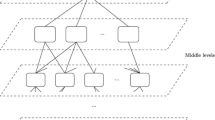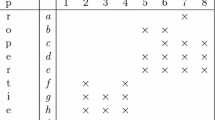Overview
- Editors:
-
-
Andrzej Bargiela
-
School of Computer Science, The University of Nottingham, Semenyih Selangor Darul Ehsan, Malaysia
-
Witold Pedrycz
-
Department of Electrical & Computer Engineering, University of Alberta, Edmonton, Canada
- Contains the latest research in the rapidly growing interest in the area of Granular Computing (GC)
- Systematic exposure of the concepts, design methodology, and detailed algorithms
- Carefully structured and organized illustrative material
- Self-contained book , down to earth presentation of the material
- Includes supplementary material: sn.pub/extras
Access this book
Other ways to access
About this book
Information granules and their processing permeate a way in which we perceive the world, carryout processing at the conceptual (abstract) level, and communicate our findings to the surrounding environment. The importance of information granulation becomes even more apparent when we are faced with a rapidly growing flood of data, become challenged to make decisions in complex data settings and are required to appreciate the context from which the data is derived. Human centricity of systems that claim to be “intelligent” and the granular computing come hand in hand. It is not surprising at all to witness that the paradigm of Granular Computing has started to gain visibility and continues along this path by gathering interest from the circles of academics and practitioners. It is quite remarkable that the spectrum of application and research areas that have adopted information granulation as a successful strategy for dealing with information complexity covers such diverse fields as bioinformatics, image understanding, environmental monitoring, urban sustainability, to mention few most visible in the literature. Undoubtedly, there are two important aspects of Granular Computing that are worth stressing. First, there are several formalisms in which information granules are articulated so be intervals (sets), fuzzy sets, rough sets, soft sets, approximate sets, near sets and alike. They are complementary and each of them offers some interesting views at the complexity of the world and cyberspace.
Similar content being viewed by others
Table of contents (16 chapters)
-
-
- Tuan Trung Nguyen, Andrzej Skowron
Pages 1-30
-
-
- James F. Peters, Sheela Ramanna
Pages 49-66
-
- Wen-xiu Zhang, Hong-zhi Yang, Jian-min Ma, Guo-fang Qiu
Pages 67-94
-
-
- Paulo Fazendeiro, José Valente de Oliveira
Pages 119-151
-
-
- Robert John, Simon Coupland
Pages 185-201
-
- Oscar Castillo, Patricia Melin
Pages 203-231
-
- Bruno Apolloni, Simone Bassis, Antonio G. Zippo
Pages 233-264
-
- Giovanni Acampora, Vincenzo Loia, Athanasios V. Vasilakos
Pages 265-287
-
-
- Ranajit Das, Sushmita Mitra
Pages 313-327
-
- Tadeusz Burczyński, Piotr Orantek
Pages 329-350
-
- Kazuhito Sawase, Hajime Nobuhara, Barnabas Bede
Pages 351-373
-
- Julie Greensmith, Uwe Aickelin
Pages 375-395
-
Editors and Affiliations
-
School of Computer Science, The University of Nottingham, Semenyih Selangor Darul Ehsan, Malaysia
Andrzej Bargiela
-
Department of Electrical & Computer Engineering, University of Alberta, Edmonton, Canada
Witold Pedrycz




